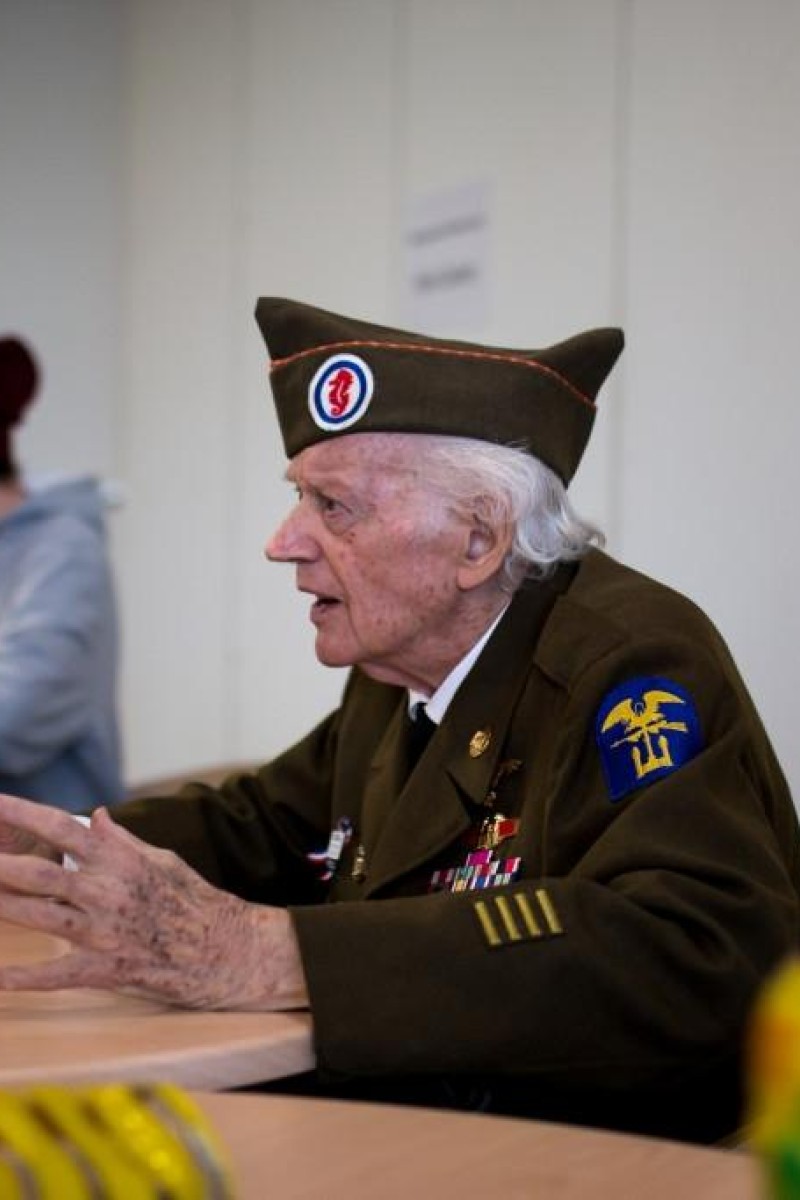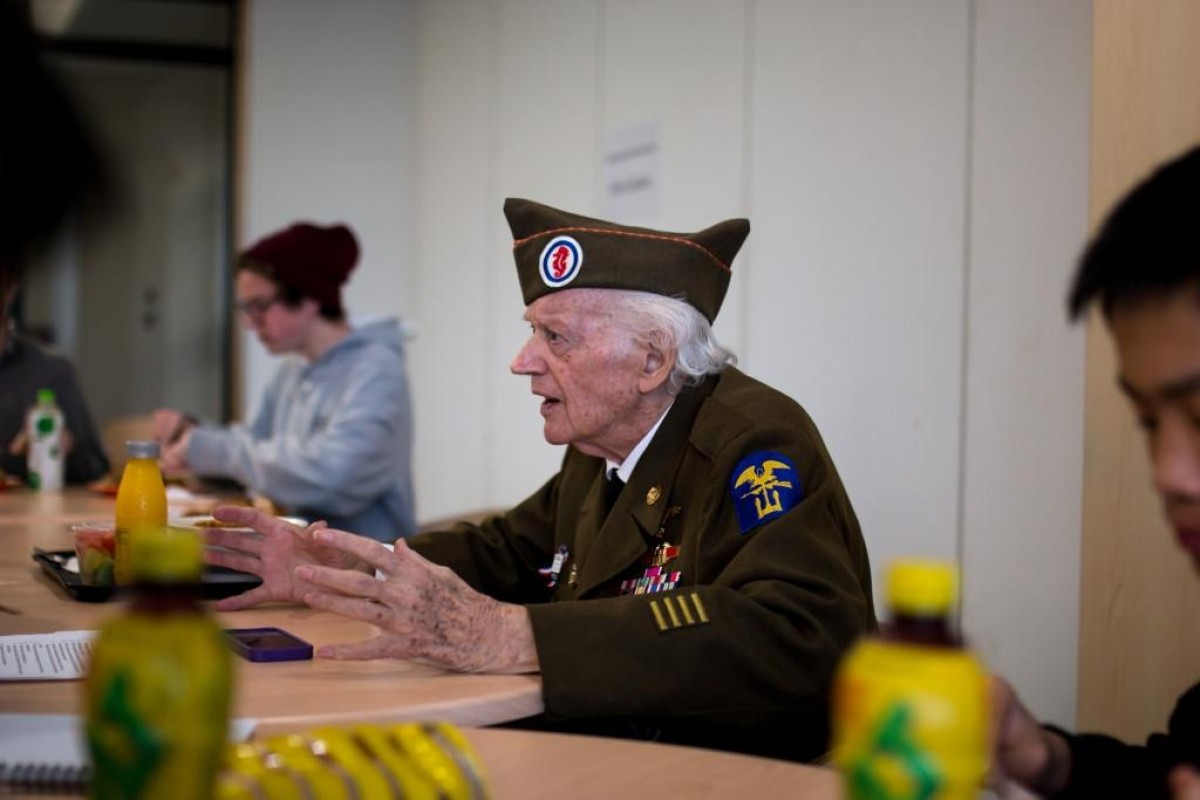
Using stories from his incredible life, Sergeant Rick Carrier wants to inspire youngsters to make the world a better place

For most students, anything before 1980 seems like ancient history. You probably learn about the major events of the 20th century, like the second world war, the Holocaust and the Great Depression, in history class. Or you may study famous painters like Pablo Picasso and Henri Matisse in art class.
Sergeant Rick Carrier doesn't need to read the textbook - he lived through these events, and even met those artists.
Carrier spoke at Hong Kong International School in January to share his experiences with students.
Carrier was drafted into the US army at 18, training in England before he joined the fighting. He served under General Patton as a combat engineer during the second world war, and fought at D-Day as part of the Allied liberation of Europe.
He recalls crawling along a beach in Normandy, France, in 1944. "My job was in front of me and getting there was hell because mortars were coming down," he says. "Fighter planes flew in at low level and rained down 50 calibre bullets, one plane after another ... the empty shells were coming down on us like hail."
Carrier was part of the First Army Seventh Core First Engineer Special Brigade. Ordered to aid General Patton's Third Army as a combat engineer, his job was to search captured territories for abandoned German engineering supplies.
On his 20th birthday, he discovered the Buchenwald concentration camp, the largest concentration camp in Germany, and led its liberation.
Carrier was trailing behind Patton's army searching a destroyed and abandoned village when a priest told him about a stone quarry and lumber mill in a Nazi prison camp nearby. The camp was called Buchenwald.
Two Russian prisoners hiding with the priest led Carrier to the camp's main gate. While Carrier describes himself as a battle-hardened soldier at that point, he was still unprepared for the site of "walking skeletons" behind the barbed wire of the camp. "I never, ever, ever witnessed anything as horrible as this," Carrier says.
A few days earlier the camp commander had abandoned Buchenwald, taking 20,000 prisoners with him. The camp was in control of Nazi guards and barrack wardens. Carrier notified General Patton's forces and the next day it was liberated.
After the war, Carrier studied art in Paris, where he met famous artists like Picasso and Matisse. Artists in Paris at the time made honorary visits to his art school.
One day Matisse came up behind Carrier and, with a piece of chalk, made one big sweep on his paper. "Fill the frame," he said, before walking off.
"I'm kicking myself in the rear for not keeping [the paper]," Carrier laughs. "That was such a beautiful experience."
Later when he returned to the US, he found a career in Hollywood with American billionaire tycoon Howard Hughes.
Now Carrier is a guest lecturer who travels the world to spread his story and help students gain a better understanding of the major events which shaped recent history. Carrier urges young people to find a cause they are passionate about and dedicate themselves to it.
He hopes his experiences will help empower the younger generation to address current injustices. He also wants to see more youngsters take the initiative to be leaders, and start to make a change. Carrier says it can help to look at current problems like you would look at a negative of a photograph. "It's the reverse, when you print it, it comes out so you'll understand it," he says. "You have to be awake. You have to think positively so you can attack the negative."